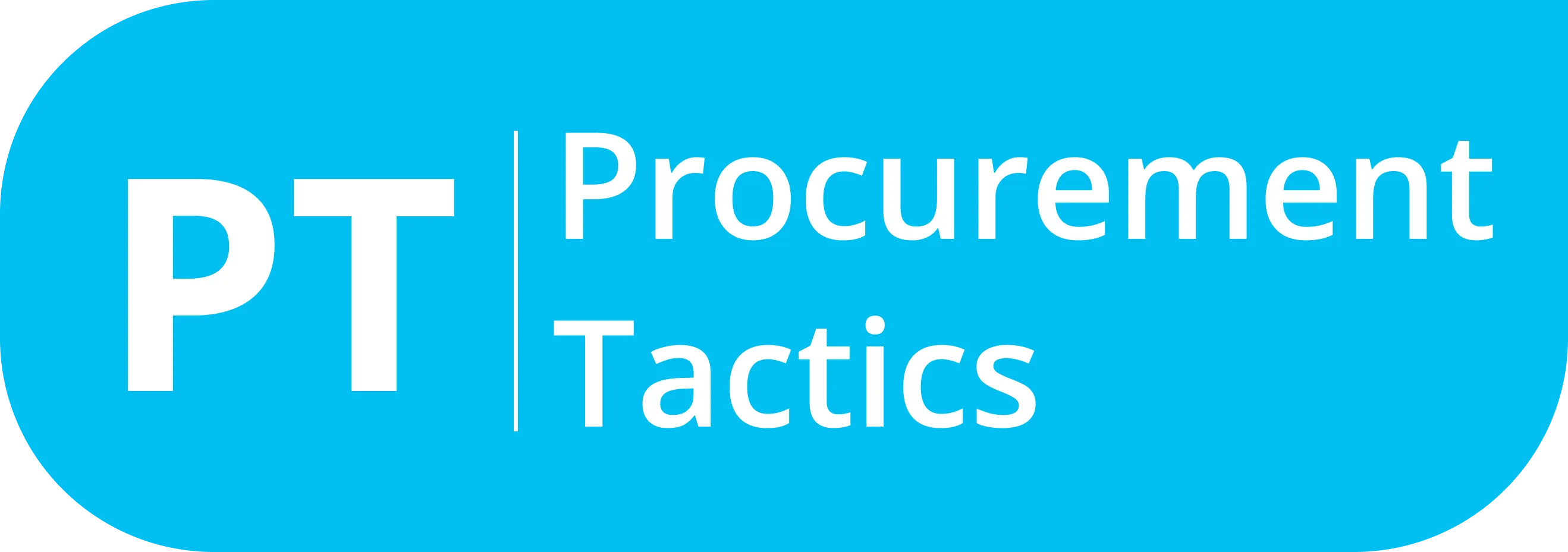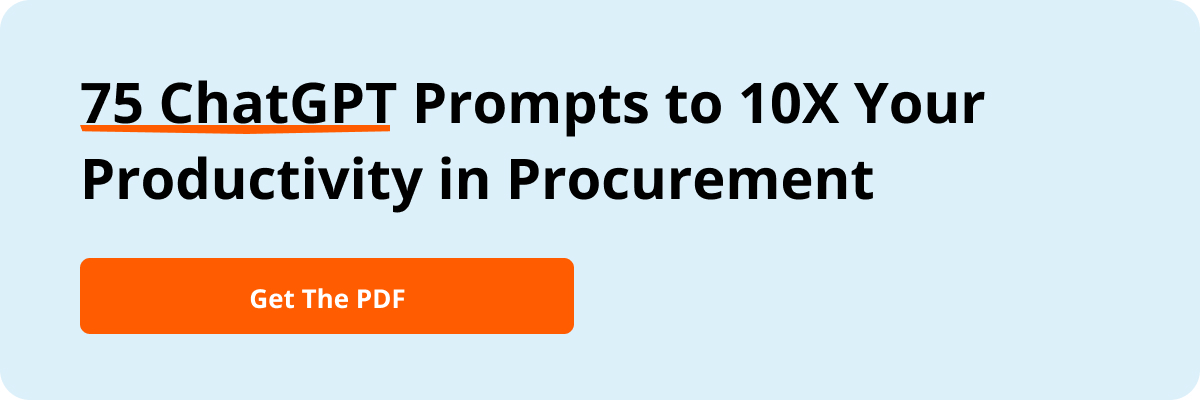Written by Marijn Overvest | Reviewed by Sjoerd Goedhart | Fact Checked by Ruud Emonds | Our editorial policy
Procurement vs Purchasing — 5 Crucial Differences You Should Know
Key takeaways
- Procurement and purchasing, though distinct, are interrelated functions in obtaining goods and services.
- Procurement is strategic, prioritizing value and involving supplier relationship management, while purchasing tends to focus on transactions, emphasizing cost and immediate needs.
- Understanding these differences and how they complement each other is vital for effective supply chain management.
For a professional procurement manager, procurement and purchasing are terms that they can identify at a glance. There should be no confusion as to which is which. However, it is always a good idea to go over a refresher course. And that is exactly what this article is about.
We are going to differentiate procurement from purchasing while exploring the top five reasons why they are different from one another. We will tackle the processes for each procurement process. Finally, when you are done reading this article, you’ll now have an idea of how to use both procurement and purchasing to make the procurement process better.
Key Differences Between Procurement and Purchasing
Here are some key differences you may want to know about procurement and purchasing. Keep these in mind the next time someone asks you what the difference between procurement and purchasing is!
1. Analytical vs Strategic
Purchasing is concerned with the transactional aspect of acquiring goods and services. It starts and ends with placing an order and receiving it which is why many think of it as a tactical function.
On the other hand, procurement is a strategic function. It is viewed by many as a strategic function due to the fact that it focuses on aspects such as finding the right supplier, maximizing contract value, and ensuring that all goods will be received on time.
2. Focus
Purchasing is focused on the cost or price of goods or services as it aims to minimize costs. On the other hand, procurement is more focused on value creation, cost savings, contract compliance, risks mitigation, and supplier relationship management.
3. Supplier relationship
In purchasing, building a strong supplier relationship is almost non-existent as it tends to only work with the current supplier base just to buy goods and services needed by the company.
However, supplier relationship is crucial in procurement as it allows suppliers to be valuable strategic partners of the company which can improve the value of their relationship.
4. Complexity
Procurement can be more complicated because it has many steps and requires making more decisions. On the other hand, purchasing is simpler and has fewer stages. Once you’ve bought what you need, purchasing is finished.
In procurement, you need to keep an eye on how well suppliers are doing even after the contract is over. This makes procurement a bit more ongoing and involved compared to purchasing.
5. How Goods or Services are Evaluated
When it comes to procurement, procurement managers care a lot about how useful something is, not just how much it costs. They want to know if it’s a good deal for the long run. On the other hand, purchasing is more about looking at how much things are being sold for. They focus on the price tag and making sure it fits the budget.
For example, in procurement, they might think, “Is this thing going to help us save money or work better in the future?” But in purchasing, it’s more like, “Can we afford this thing right now based on its price?”
Also, after you buy things through procurement, you keep checking if they’re still doing well even after the deal is done. In purchasing, it’s mostly about the buying part, not so much about how things perform later on.
What is Procurement?
For the professional procurement manager, procurement means the process of identifying, shortlisting, selecting, and acquiring needed goods or services from a third-party vendor.
It can be done via direct purchase, competitive bidding, or tendering process while making sure that the delivery of the supplies is done in a timely manner.
What is Purchasing?
Purchasing is an entirely different thing from procurement. Purchasing means a set of functions that are associated with buying goods and services that the company or organization requires.
The only reason why purchasing is often associated with procurement is that it is a small subset of a broader procurement function. In simple terms, purchasing is a part of procurement.
The purchasing process always includes ordering, expediting, receiving, and fulfilling payment.
The Procurement Process
As explained, the procurement process is the process of sourcing a product or a service. So for the procurement manager, there is a set of rules and processes that need to be followed in order to build the procurement process.
A typical procurement process is usually divided into the following steps:
Identifying a need
Researching for relevant suppliers
Creating a preferred supplier list
Supplying requests for quotation (RFQ)
Evaluating supplied quotes and suppliers
Negotiating terms and contracts with suppliers
Arranging and receive product/service
Performing quality check
Analyzing results, margins, and KPIs
Developing and maintaining relationships with suppliers
The Purchasing Process
To put it simply, purchasing needs. Those products/services do not affect the growth of the company but are rather just needed for its continuous operations.
Does that mean that the procurement manager won’t bother with creating a purchasing process?
The answer is a big no. A procurement manager recognizes the importance of creating a purchasing process since it enables the company to achieve short-term goals that include timing, costs, and quantity.
The typical purchasing process includes the following:
Evaluating received RFQs
Creating and distributing purchase orders
Receiving products/services
Quality assurance of received service/product
Receiving a purchase requisition
Arranging payment to suppliers
Procurement and Purchasing: Similar and Yet, So Different
In a procurement team, the terms procurement vs purchasing are often used with just one meaning in mind. Both of the terms are often associated with buying supplies or materials that probably no one cares about defining each term properly. But for a good procurement manager, distinguishing purchasing from procurement is an important skill.
The Procurement and PurchasingDefinition Table
To help procurement managers with setting definitive qualities for procurement and purchasing, we at Procurement Tactics created a simple table for such a need.
More definitions and terms are available for interested procurement managers in our Negotiation Course For Procurement Professionals.
So if we were to create a small and simple table for defining procurement and purchasing, it’d go about something like this:
Examplesof Procurement and Purchasing
Although there are many types of procurement and purchasing, they both have one thing in common: to acquire the best product or services for the best possible price. Here are some examples of how procurement and purchasing are done:
This process is where suppliers submit their bids to provide goods and services. Thus, the government or a company chooses the bid that matches their requirements.1. Competitive Bidding
2. Sole Sourcing
This process happens when there is only one supplier who can provide for the needs of the company.
3. Open Market
This happens when a company purchases goods or services from the open market without any restriction to suppliers who can provide for its needs.
4. Request For Proposal (RFP)
This document is issued when a company or the government wants to purchase goods or services but there are many suppliers who can provide for their needs.
Thus, the suppliers submit their proposals, and the company or the government will choose the proposal that matches their requirements.
5. Reverse auction
In this process, suppliers compete against each other to offer the lowest price for their goods and services. The company will choose the supplier who has the lowest price.
Conclusion
Just like we discussed earlier, procurement is about finding and getting things a company needs, like products or services. On the other hand, purchasing is a smaller part of this, where you actually buy the stuff.
So, procurement is like the big plan for managing everything the company needs, while purchasing is about getting those specific things.
Now that you get the difference between procurement and purchasing, we hope it’s clearer for you to see how they each play their own important role in making sure a company has what it needs.
Frequentlyasked questions
What is the difference between procurement and purchasing?
The difference between procurement and purchasing is that procurement is all about sourcing the best supplies for the right price. Meanwhile, purchasing is all about buying materials or services that the company needs.
What is procurement?
Procurement is the process of choosing products and/or services from the best supplier for the best price.
What is purchasing?
Purchasing is simply buying supplies or services that are needed by the company.
About the author
My name is Marijn Overvest, I’m the founder of Procurement Tactics. I have a deep passion for procurement, and I’ve upskilled over 200 procurement teams from all over the world. When I’m not working, I love running and cycling.


